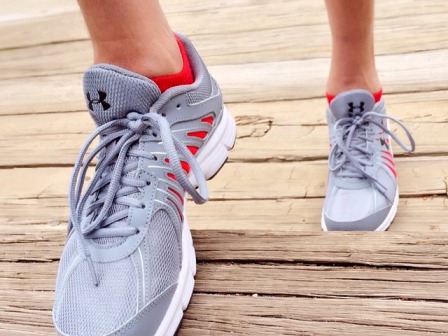How to Choose the Right Sports Shoes
How to Choose the Right Sports Shoes

According to experts, the most important part of sports equipment that can prevent our body from injuries and accidents are training shoes. However, many of us do not pay much attention to shape, material, and purpose of sports shoes. We simply reach out to our last favorite shoes without even considering whether they are the right choice for our specific training type. Sports experts explain that each specific training requires a distinct pair of shoes. Therefore, we cannot wear running shoes and play basketball, or wear tennis shoes for hiking. In fact, we can, but it will increase the risk of injuries. Each type of shoes is designed considering particular demands that certain sports put on our feet. For example, running shoes are specifically designed for running. They have a firm heel and a good support that makes the landing of our feet as safe as possible. However, they are not lateral strengthened, because we do not need lateral support while running. But, if we want to play tennis or basketball, we need proper sports shoes with good lateral support. To understand how to choose the right sports shoes, the article “10 Tips for Choosing Athletic Shoes” explains what we need to know about our feet.
How to Choose the Right Sports Shoes
One way to determine your foot’s shape is to do a “wet test”— wet your foot, step on a piece of brown paper and trace your footprint. Or just look at where your last pair of shoes shows the most wear.
If your footprint shows the entire sole of your foot with little to no curve on the inside — or if your shoes show the most wear on the inside edge — it means you’ve got low arches or flat feet and tend toward overpronation — meaning your feet roll inward. Overpronation can create extra wear on the outside heel and inside forefoot. You’ll want a shoe with a motion-control feature and maximum support.
If the footprint shows only a portion of your forefoot and heel with a narrow connection between the two — or if your shoes wear out mostly on the outside edge — you have high arches and tend to underpronate (also called supinate), meaning your feet roll outward. Underpronation causes wear on the outer edge of the heel and the little toe. Look for a cushioned shoe with a soft midsole.
Many people find a solution in wearing cross-training shoes because they cover different types of training. Even though a good cross-training shoes are a perfect choice for occasional jogging, aerobics, and yoga, they are not a happy choice for people who pursue a certain type of training. Cross-training shoes can be useful for a variety of activities, but they are a weak choice when it comes to a particular sport. For that reason, sports experts do not recommend wearing them if we want to dedicate our time to specific sports activity. Before we go shopping, we need to think what type of training we want to pursue in the following year, collect information and consult with customer support in a specialized shop. When we buy the perfect pair of sports shoes for our chosen activity, there is one more thing: they cannot last forever. One year of regular training (three times a week) is the optimal time for every sports shoe. After that, we need to replace them, even though they look fine from the outside. Their shelf life is simply running out, and they do not do the job they are meant for.


